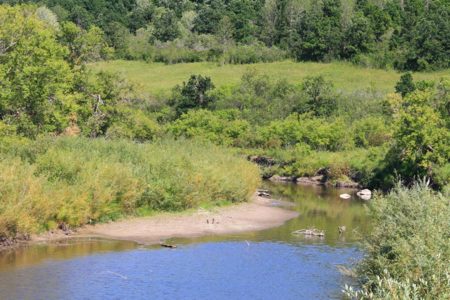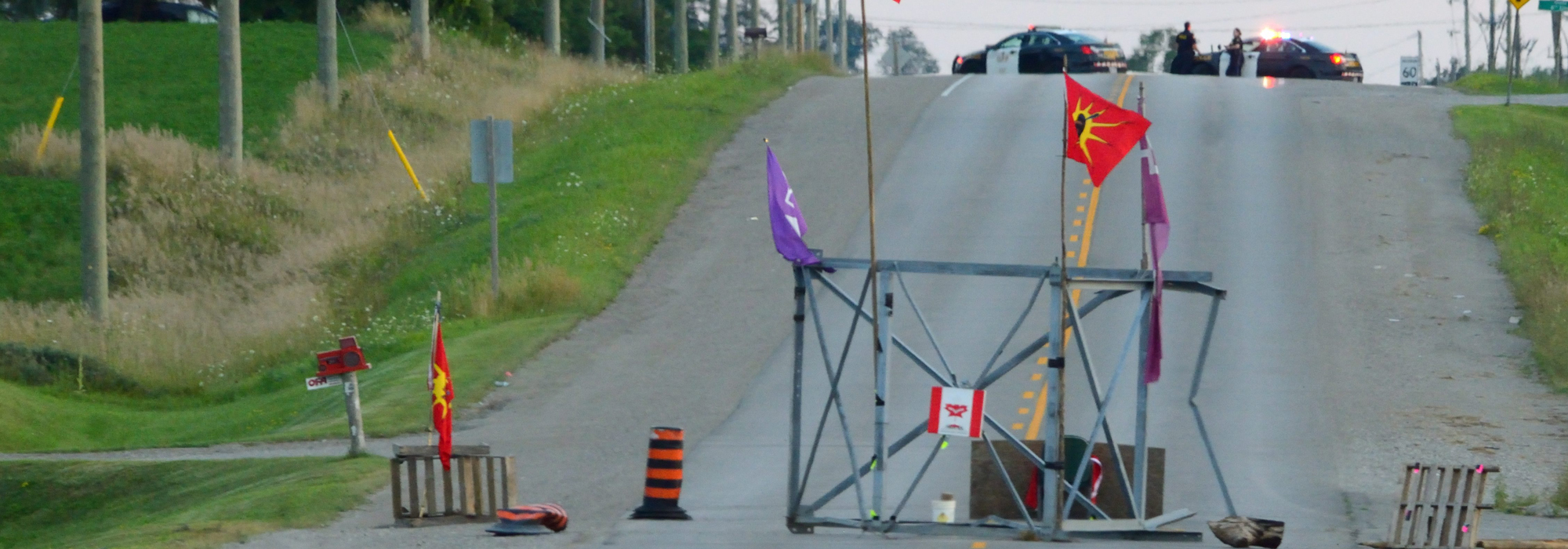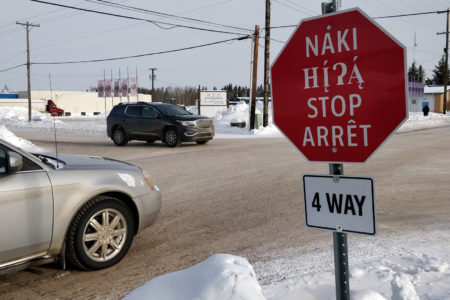
In March this year, the Burtch lands, one of the three parcels of land promised by former Ontario Premier David Peterson to the Haudenosaunee of the Six Nations of the Grand River, was transferred by the province to a corporation run by the Six Nations band council. The transfer is part of the resolution of a decades-old land claim, which erupted in protests and a road blockade in 2006 over the planned construction of a residential development. More than a decade later, another blockade emerged in the community this summer, this time pitting the band council against the Haudenosaunee Confederacy, the traditional political body of the Six Nations people.
This blockade gets to the heart of contemporary debates over nationhood and decolonial politics in Canada and lays bare the divisive legacy of the Indian Act. The mishandling of negotiations over the Burtch lands is illustrative of the inconsistent, irresponsible, and ultimately unethical land rights policies. It puts the burden of resolving these insufficient policies – and of reconciliation with surrounding non-Indigenous communities – on the Haudenosaunee people.
Negotiating with the Haudenosaunee Confederacy
Peterson’s negotiations with Six Nations in 2006 marked the first time since 1924 that the Canadian government recognized the authority of the Haudenosaunee Confederacy chiefs council to negotiate land issues since the forceful installment of the band council system under the Indian Act. Peterson wrote to the confederacy at the time, saying, “The title of the Burtch lands will be included in the lands rights process of the Haudenosaunee/Six Nations/Canada/Ontario. It is the intention that the land title be returned to its original state, its status under the Haldimand Proclamation of 1784.” The Haudenosaunee Confederacy chiefs council is the traditional political representation of the people of Six Nations and has remained an integral part of Haudenosaunee society, despite the institution of the band council system, which is seen by many as the colonial administrative arm of the Canadian government.
For many at Six Nations, the emphasis on the Confederacy Council’s position as negotiators has marked an important moment for the resurgence of Haudenosaunee traditionalism. Where the band council system has been characterized as “a creature of the government itself,” through which lands supposedly returned to Six Nations remain the possession of the Crown, the Confederacy Council represents a continuance of Haudenosaunee government structures and is rooted in centuries of cultural and intellectual tradition.
From Haudenosaunee Chief Deskaheh’s petitioning of the League of Nations for recognition of Six Nations sovereignty in 1923, to the Haudenosaunee’s role as key contributors to the UN Declaration on the Rights of Indigenous Peoples, for many Haudenosaunee, this more recent recognition of the Confederacy Council is an important articulation of the self-determination of First Nations people.
Did Peterson not understand the weight of negotiating with the Confederacy Council and his emphasis on the Haldimand Proclamation (which predated the band council system and the Indian Act)? Did the federal and provincial governments change their minds when they handed the land back directly to the band council, to be administered under the Indian Act, rather than to the Confederacy Council?
Divisions in the community
Whatever the case, the result has been a resurgence of tensions between Six Nations and surrounding communities as can be seen in the re-emergence of the blockade in Caledonia, and between the Haudenosaunee themselves. In short, the lack of foresight on behalf of the federal and provincial government pits band council against Confederacy Council and community against community.
An injunction has since been filed against Six Nations resident Kristine Hill by the elected band council. Hill holds a five-year lease from the Confederacy Council to farm the Burtch lands, but now risks trespassing charges as the matter sits before the Superior Court of Ontario.
Like those in any community, Six Nation’s residents have differing viewpoints and opinions, and some community members may support or stand to benefit from the authority of the band council, while other interests may align with the Confederacy Council. While these matters cannot be disentangled from the imposition of the Indian Act on the Haudenosaunee in 1924, or indeed from more general colonial policies, they are, of course, the business of the people of Six Nations.
The government’s failure to negotiate this land transfer in a clear and reasonable way has once again thrust the Haudenosaunee of the Grand River into the national spotlight and opened them up to the ire of the surrounding non-Indigenous communities, who have largely failed to understand the complex history and politics of the lands they inhabit.
In an apparent desire to wash its hands of the matter, when contacted for comment by the Toronto Star, the Ontario Ministry of Indigenous Relations and Reconciliation responded, “The use of the land is now a matter internal to the Six Nations community.”
On August 28, Prime Minister Justin Trudeau announced that Indigenous and Northern Affairs Canada (INAC) will be dissolved and that two new ministerial roles will be created: the Minister of Crown and Indigenous Relations and Northern Affairs, and the Minister of Indigenous Services. According to the Prime Minister, one of the main reasons for dissolving INAC is to advance self-determination and self-government for Indigenous peoples. Trudeau stated “Indigenous and Northern Affairs Canada (INAC) — which serves as a focal point in the government’s relationship with Indigenous Peoples — is charged with implementing the Indian Act, a colonial, paternalistic law.” While many Indigenous peoples are rightly skeptical of the shakeup, Trudeau’s statement and his decision to take up one of the long overdue recommendations of the Royal Commission on Aboriginal Peoples (RCAP), at the very least, serves to acknowledge the colonial relationships perpetuated under the Indian Act.
The band council system is just one iteration of these colonial relationships. And while Indigenous communities have competing views as to the relevance and effectiveness of their elected band councils — and these views too must be considered in any discussions of self-determination—a move to negotiate directly with hereditary, traditional, and/or confederacy councils, is a step toward the kind of nation-to-nation relationships that the Prime Minister has mentioned in so many talking points.
Where Peterson’s initial negotiations with the Confederacy Council marked a historically significant move on behalf of the Canadian government, it would behoove those involved in the negotiation and implementation of land rights policies to follow through on these reconciliatory gestures. Not only must they must negotiate in good faith, but they must see those negotiations through to fruition in the spirit in which they were negotiated.
As it now stands, the government has implemented a divide and conquer land rights policy in the region, which is fragmenting not only the people of Six Nations but also the already tenuous relationships between Indigenous and non-Indigenous peoples who share this territory.
This article is part of the special feature The Indian Act: Breaking Its Stubborn Grip.
Photo: Flanked by Ontario Provincial Police vehicles, a piece of an incomplete Hydro One tower was used as a blockade by the Haudenosaunee Confederacy near the Six Nations reserve in Caledonia, ON in August 2017. THE CANADIAN PRESS IMAGES/Stephen C. Host.
Do you have something to say about the article you just read? Be part of the Policy Options discussion, and send in your own submission. Here is a link on how to do it. | Souhaitez-vous réagir à cet article ? Joignez-vous aux débats d’Options politiques et soumettez-nous votre texte en suivant ces directives.








